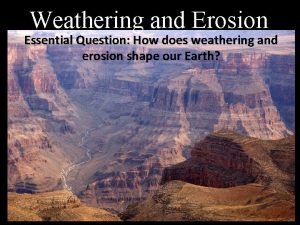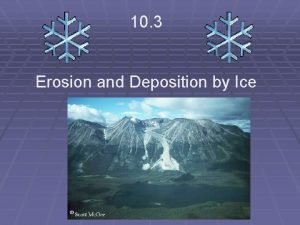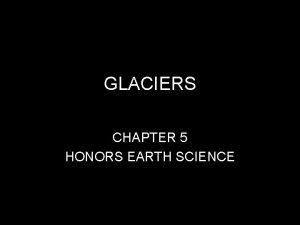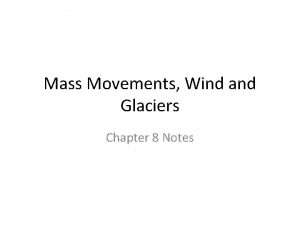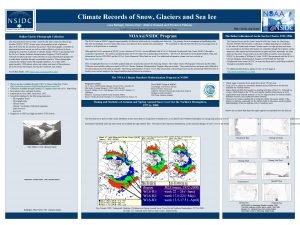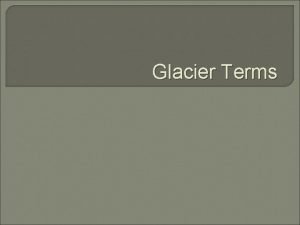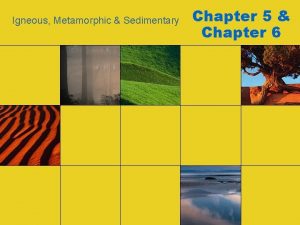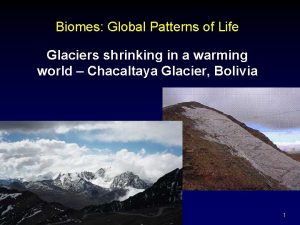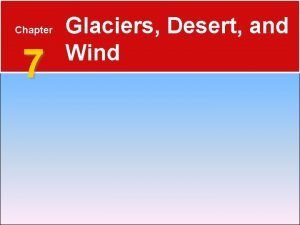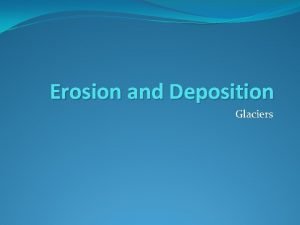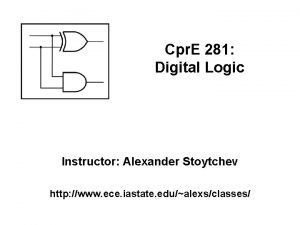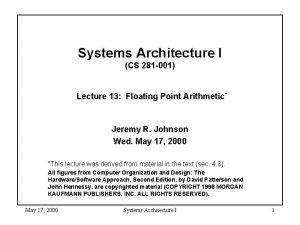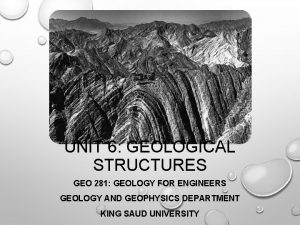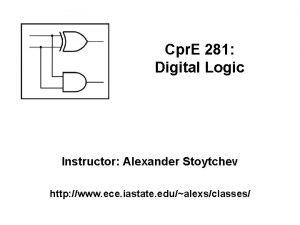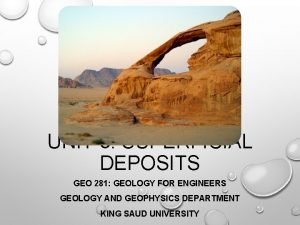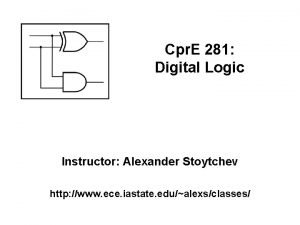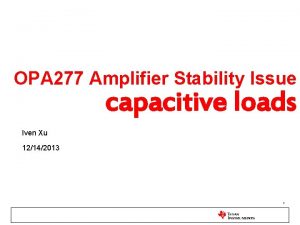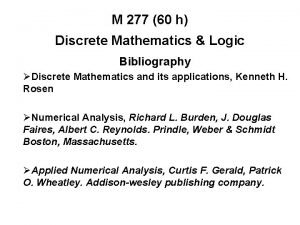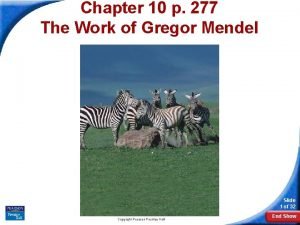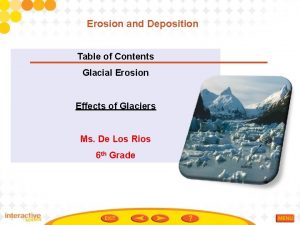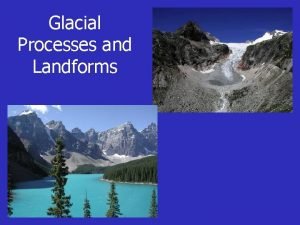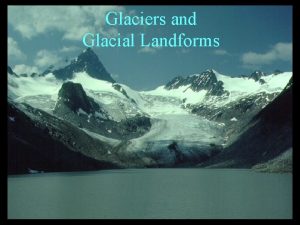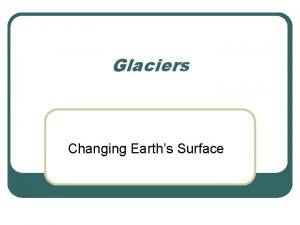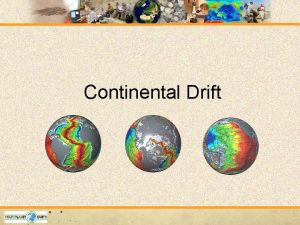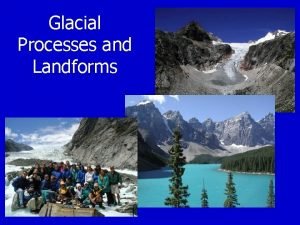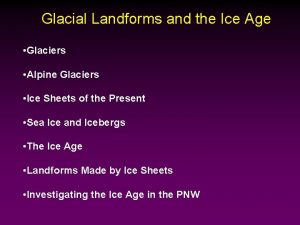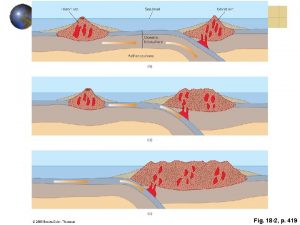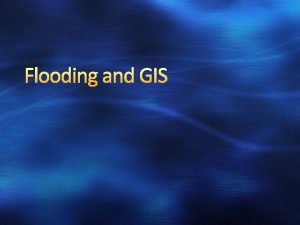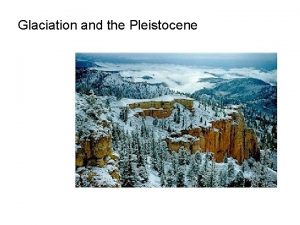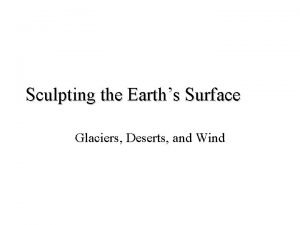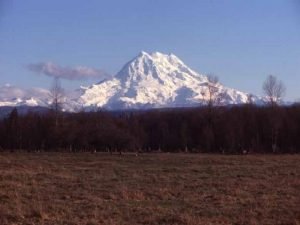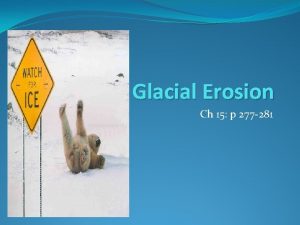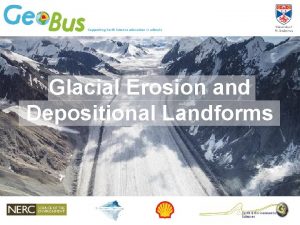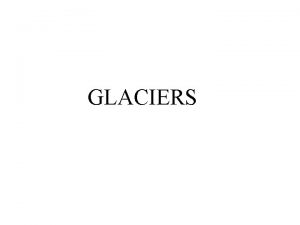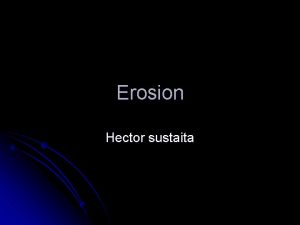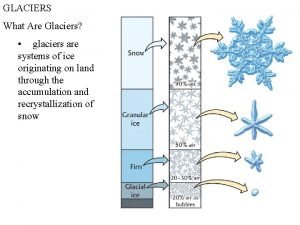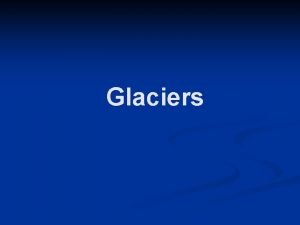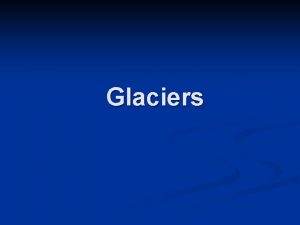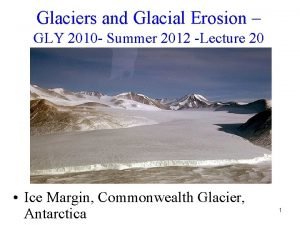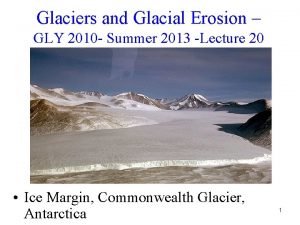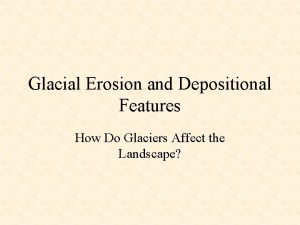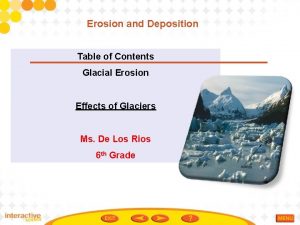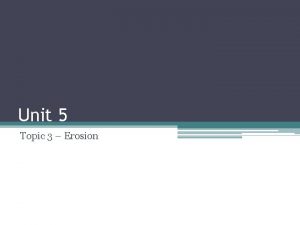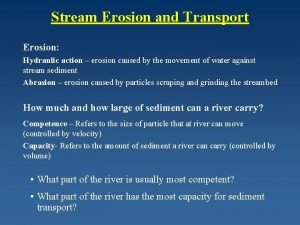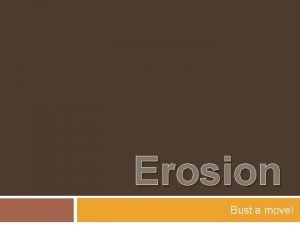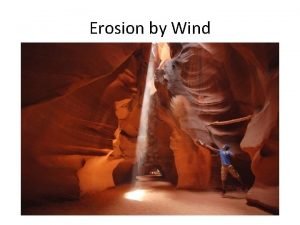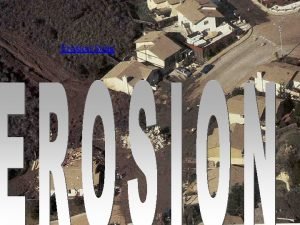Glacial Erosion Ch 15 p 277 281 Glaciers


















































- Slides: 50

Glacial Erosion Ch 15: p 277 -281

Glaciers: ØEnormous masses of moving ice created by the accumulation and compaction of snow. ØPowerful agents of erosion ~ have carved some of the most spectacular features on Earth’s surface ØThe growth of a glacier depends on whether the snowfall from winter is greater than the snow melt in summer!

2 types of Glaciers: Alpine (aka Valley) Continental (ice sheets) �Mountainous areas �long, narrow-wedged mass of ice �Best developed valley glaciers found in Alaska, the Himalayas, the Alps… �Covers large land areas �Found only in Greenland Antarctica today

Valley Glacier

Continental ice sheet The Antarctic Ice Sheet is 1. 5 times the size of the US and in some places more than 4, 000 m thick


How Glaciers form:

Step 1: Snow accumulates. More snow falls during the winter than melts in the summer.

Trans-Labrador Highway http: //tlhwy. com/south/winter/index. html

Step 2: Snow changes to firn. As snow accumulates, its weight compresses the individual snowflakes to form firn.

Step 3: Firn is compressed to form solid glacial ice

Step 4: The ice begins to move. Continental Valley

Some Facts �Glaciers hold 75% of the Earth’s fresh water. � 10% of land is covered by them. �If they all melted the sea level would go up about 70 m �Artic ice is over 4, 200 m thick in some spots.

2 types glacial movement: Basal Slip Internal plastic flow �The weight of the ice exerts enough pressure to melt the ice where it contacts the ground �This melt water acts as a lubricant and allows the glacier to slip forward, including over small barriers �The weight of the ice and gravity causes the ice crystals to slip over each other �Speed of this flow is faster nearer the surface and at its center…why? . . . � friction!


How do glaciers erode the surface? �Plucking – freeze/thaw process lifts particles into ice �Abrasion- like sandpaper-rocks caught up on the bottom scrape the ground under it, making striations

Glaciers pick up lots of sediment as they advance over the land. http: //www. geographyjim. org/Newzealandglacier. jpg

http: //daac. gsfc. nasa. gov/DAAC_DOCS/geomorphology/GE O_9/geo_images_9/Fig 9. 20. gif

Cirque �A bowl-shaped depression located where a glacier begins to form

http: //crevassezone. org/Photos/Graphics/4163 L-(Cirque). jpg

Horn Kinnerly Peak - Glacier National Park �A tall, pointed rock peak left at the top of a mountain http: //www 2. nature. nps. gov/geology//parks/glac/car 0348. jpg

The most famous horn in the Alps… The Matterhorn �Located on the boundary between Switzerland Italy, the Matterhorn’s summit is 4478 m above sea level.

Arete – spines or ridges of rock that separate glacial valleys

U-shaped Valley - Yosemite National Park

V-shaped valleys become U-shaped valleys as glaciers move through them… Step 1 Step 3 A typical river valley Glacier fills valley, widening and straightening the channel Step 2 Step 4 Over time, running water cuts a deeper V -shape. Glaciers melt leaving a U-shaped valley

U-Shaped Valley Formation

Hanging Valley �a small valley that has not eroded as deep as the main valley that it is connected to �Waterfalls often form at hanging valleys.



Striations- parallel scratches made from rocks in ice scraping against bedrock


l Kett s e k e La A shallow body of water made from ice blocks

Glacial Deposition: �Drumlins--hills of sediment deposited by the glacier- till

Drumlin Formation

Glacial DEPOSITION �Eskers �Winding ridges of stratified drift �Deposited by meltwater streams �Mined for gravel (aggregate)

Esker Formation

Glacial DEPOSITION �Kames �Cone shaped stratified deposits �Deposited at end of meltwater streams

Kames

MORAINES moraine outwash http: //www. helsinki. fi/~jhyvonen/PB/M/Cerro%20 Tronador%20 moraine-pp. JPG �MADE OF TILL- unsorted sediment

Moraines �Terminal Moraine – Till deposit that marks the furthest advance of the glacier. �Recessional Moraine – Till deposit that marks pauses in the ice fronts retreat Till (moraine)

moraine outwash

Ground Moraine- flat till deposits between recessional moraines Grou nd m Rec essi ona orain e Terminal moraine outwash Rec l mo rain ona e l mo rain e

Other Moraines �Lateral Moraines- These are on the sides of valley/mountain glaciers �Medial Moraines – When two glaciers run along one another/collide these moraines form. �Both are composed of till



Glacial DEPOSITION

MORAINES

Types of Glacial sediment: ERRATICS- • Boulders carried great distance by the glacier • Don’t match surrounding rock

Types of Glacial Sediments (drift) �TILL- unsorted; deposited by ice �STRATIFIED DRIFT- layered (sorted into layers by size); deposited by meltwater streams �OUTWASH- sorted sand; deposited by meltwater

 Glaciers cause erosion by abrasion and
Glaciers cause erosion by abrasion and Soil erosion diagram
Soil erosion diagram What are the two main types of glaciers
What are the two main types of glaciers Moraine
Moraine Continental divide minnesota
Continental divide minnesota Examples of mass movement
Examples of mass movement Nsidc glaciers
Nsidc glaciers Glacier terms
Glacier terms Metamorphic rock
Metamorphic rock Bolivia glaciers
Bolivia glaciers Chapter 7 glaciers deserts and wind
Chapter 7 glaciers deserts and wind Terminal moraines
Terminal moraines Ipx 281
Ipx 281 Stoytchev 281
Stoytchev 281 Cs 281
Cs 281 Cs281 wordpress
Cs281 wordpress Dönem ayırıcı hesaplar
Dönem ayırıcı hesaplar Geo 281
Geo 281 Ejercicios con numeros romanos
Ejercicios con numeros romanos Cpr e 281
Cpr e 281 Dönem ayirici hesaplar 180 181 280 281 380 381
Dönem ayirici hesaplar 180 181 280 281 380 381 Weathering types
Weathering types Stoytchev 281
Stoytchev 281 2812840027
2812840027 Cecs 277
Cecs 277 Op amp stability capacitive load
Op amp stability capacitive load Dimodium
Dimodium 277/480 transformer bank
277/480 transformer bank Cecs 277
Cecs 277 +277 isd code
+277 isd code 277 / 60
277 / 60 Cecs 277
Cecs 277 277/480 bank
277/480 bank Opkins
Opkins Opkins
Opkins Klasifikasi tanah astm
Klasifikasi tanah astm Glacial till wedding
Glacial till wedding Erosion
Erosion Piedmont
Piedmont 5 agents of erosion
5 agents of erosion Similar fossils found on different continents
Similar fossils found on different continents Glacial processes and landforms
Glacial processes and landforms Glacial ice is formed by
Glacial ice is formed by Nadw aabw glacial
Nadw aabw glacial Fossils as evidence of continental drift
Fossils as evidence of continental drift Metamorphic rocks in michigan
Metamorphic rocks in michigan Glacial river warren
Glacial river warren Océano ártico
Océano ártico C. spectabilis
C. spectabilis Michigan glacial history
Michigan glacial history Glacial deposits
Glacial deposits
